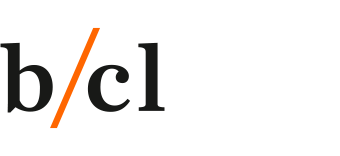Germany: Modernized Trademark Law
On 14 January 2019, on the date of the deadline, the German Trademark Modernization Act entered into force (with the wonderfully uniquely German name of “Markenrechtsmodernisierungsgesetz” – short: “MaMoG”). The Trademark Modernization Act implements the mandatory and several optional provisions contained in the revised EU Trade Mark Directive 2015/2436 of 16 December 2015 in Germany. The most important changes for German trademark law are summarized below:
APPLICATION
- Trademark applications no longer must be capable of being represented graphically. It is sufficient if their content is clear and precise. This means that filings (online or by adding allowed data carriers) are possible in which the trademark is contained in JPEG, MP3, MP4, OBJ, STL, X3D data formats. Maximum file size for JPEG and MP3 is 2 MB, for all other formats 20 MB
- With the certification mark a new trademark type is available in Germany (official filing fees: € 900 in up to three Classes, € 150 for each additional class) which has been available already since 1 October 2017 at EUIPO
OPPOSITION
- One notice of opposition may be based on more than one opposing right (before, separate notices of opposition had to be filed)
- The official fees for filing oppositions are now € 250 for an opposition based on one earlier right, for further opposing rights an additional fee of € 50 each is applicable
- Oppositions may be based on additional earlier rights: Geographical indications and protected designations of origin
- A cooling-off period of initially two months with further possible extensions is granted upon joint request
- Upon request, proof of use must be furnished for the period of five years predating the application / priority date of the opposed trademark. The requirement for further proof of use covering the five years predating the date of the decision on the opposition has been abolished.
REGISTRATION
- The grace period regarding use will start five years after either the expiry of the opposition period (and not as before five years after the registration date) or – where oppositions have been filed – on the date on which the decision on the opposition becomes final or on which the last opposition has been withdrawn.
- Licenses may be recorded upon request by the licensor or licensee, subject to the other party’s consent. Previously, there was no provision for the recordal of licenses in Germany.
REVOCATION / INVALIDITY PROCEEDINGS
- From 1 May 2020 onwards, revocation proceedings based on non-use will be dealt with entirely by the German Patent and Trademark Office. Currently, revocation actions can be brought before the PTO but must be brought to the civil courts if the trademark owner opposes the revocation request. Pushing this to 2020 is legitimate; actually, for this particular change, the Directive allows the Member States until January 2023 for implementation.
- In addition, invalidity proceedings before the German Patent and Trademark Office based on earlier rights will be available starting from 1 May 2020. The official fees are € 400 for a request based on one earlier right and additional € 100 for each additional right
RENEWAL
- The renewal period will be calculated differently for all trademarks registered after 14 January 2019: For all new trademark registrations after 14 January 2019 the 10-year renewal period will be calculated from the filing date. For all trademarks which are already registered in Germany on 14 January 2019, the renewal period remains the same as before, i.e. 10 years starting from the end of the month the trademark was applied for. This brings the renewal period for German national marks back in line with EUTMs, which underwent the identical change (from the “end of the month” to the precise filing date) in 2016.
All in all, the changes to the German trademark law are welcome as they lead to greater harmonization with EUTM law and practice. Especially the shift of invalidity and revocation proceedings from civil courts to the PTO will ultimately lead to lower costs for trademark owners.
This article was first published on Kluwer Trademark Blog.
